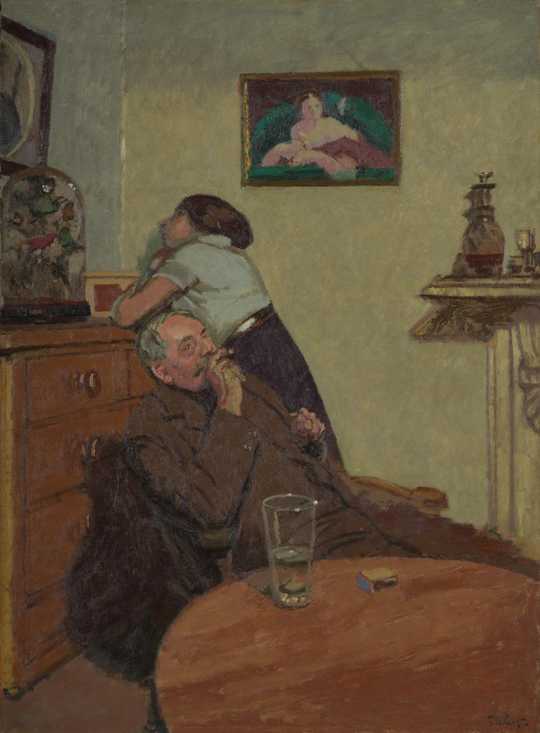16 June 2022
Walter Sickert
Tate Britain (28 April –18 September)
By William Morton

Walter Sickert (1860-1942) produced a large volume of work during his life in a variety of styles. He was influenced by several artists and in turn influenced others. Although he is perhaps not particularly well-known, a number of the works in the Exhibition are instantly recognisable such as his Venetian landscapes and music hall pictures.
Born in Germany, his family moved the UK shortly afterwards and he was educated in England. Initially, he was an actor but then switched to painting. His first influence was Whistler for whom he worked as a studio assistant. In the 1880s they visited Dieppe and the exhibition displays side by side pictures by both of them of shops in the town, Sickert’s in the same muted style as Whistler’s but perhaps with a splash more colour.
Dieppe featured a lot in Sickert’s life. He returned there many times and even lived there for some years. He painted many aspects of it such as the Grand Hotel and a café where people performed which he frequented. He made attractive studies of its St Jacques church, skilfully reflecting how its appearance changed with the light. Reminiscent of Monet’s paintings of Rouen Cathedral and presumably to some extent inspired by them, Sickert’s works stand up to comparison with them.
The next major influence in Sickert’s life was Degas, whom he met in 1883. He adopted Degas’ method of carefully preparing by making preliminary sketches and dividing the canvas into squares. Whistler believed in painting from nature. There seems little doubt that Degas’ pictures of Parisian nightlife led Sickert to embark on his music hall paintings of which the exhibition has many fine examples. He would appear to have been very familiar with the world of the music hall. The pictures are notable for showing some of the leading performers of the day and also the reaction of the audience. The Gallery of the Old Bedford, for instance, vividly shows the faces of the ordinary people in the audience and their attention to what is happening on stage.
Sickert rightly thought that the conventional depiction of female nudes was unrealistic and his nudes are determinedly unglamorous and of women living in poverty. He was a leading light in the Camden Town Group of Artists and many of the nudes were painted at his studio in that working class area. Often, the women are prostitutes and one cannot help feeling that Sickert was also fairly well acquainted with their world. Some of his Venetian portraits are also of prostitutes. However, it is perfectly possible that there was a fine line between being an artist’s model and a sex worker at the time. The nudes are stark and uncompromising. It is fascinating to compare one of them with pictures in the exhibition by Lucian Freud and Pierre Bonnard of a nude in a similar pose. The Freud is very similar in its approach to Sickert’s work but the Bonnard has, as the exhibition notes, a distinct erotic charge.
There was often a narrative to Sickert’ works and he sometimes altered the narrative by changing their title. Two Ennui paintings (one shown herewith) of married couples, clearly fed up to the teeth with each other, are fine examples. In the other one, apparently kept by Francis Bacon in his studio, the husband stares fixedly into the garden while the wife, equally determinedly, avoids looking at him.
In his later years, Sickert often used photographs as the basis for his paintings, now, of course, a common practice. Two pictures of royals, King George V and his Racing Manager and Edward VIII (the latter looking very jumpy when arriving in full military uniform for some event during his brief reign), caught one’s eye because they are so faithful to the press photographs concerned. Did they show a lack of imagination? On the whole, I think the paintings do have something extra.
Two portraits, one quite well known of a singer, Mrs Swinton, in a red dress against a background of the Venetian Lagoon and the other of Cicely Hey, did nothing for me but that is a minor personal point. Sickert is important and interesting artist and this is a well curated exhibition with a great deal to offer.

